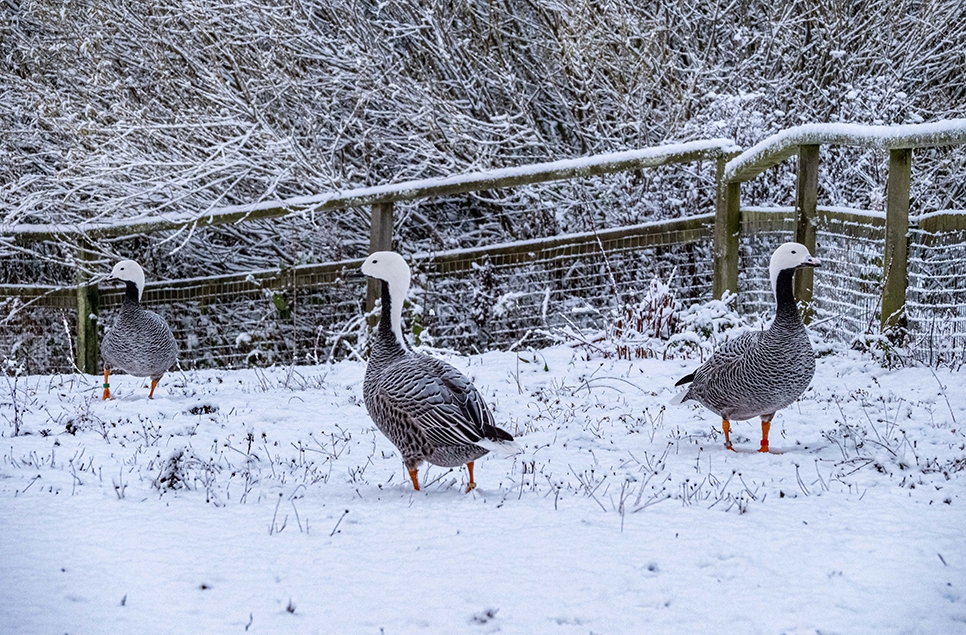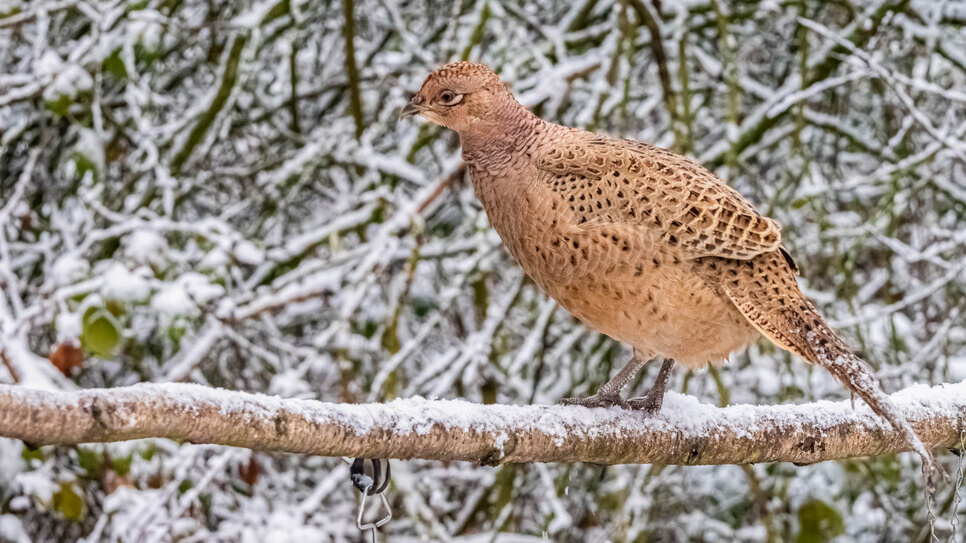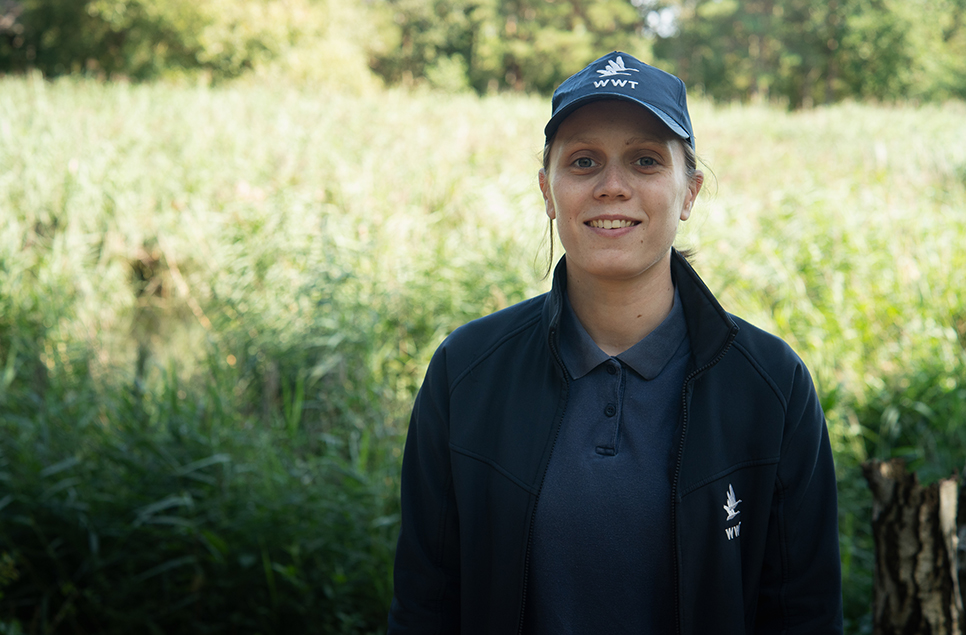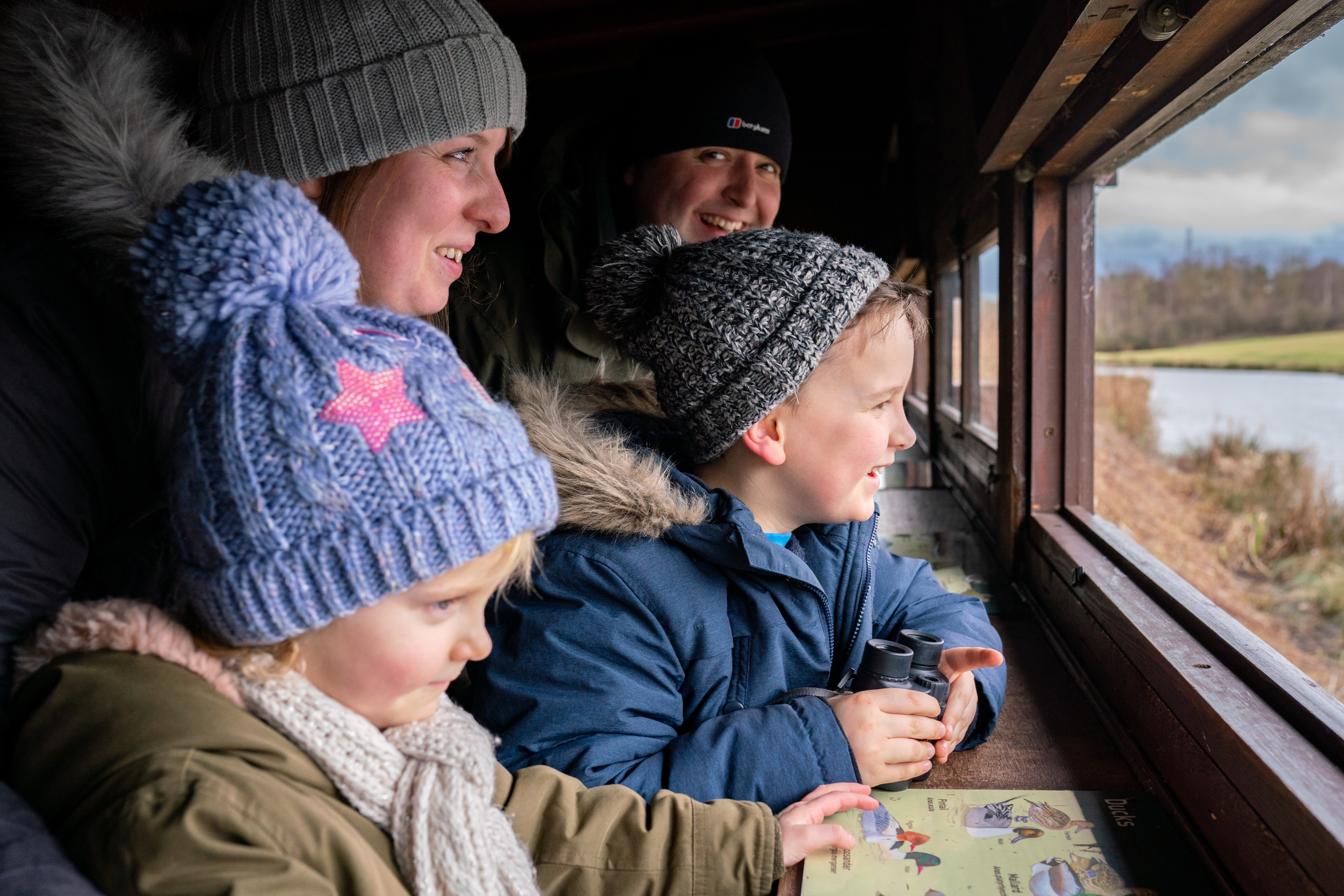Tales from the Heron Hedge
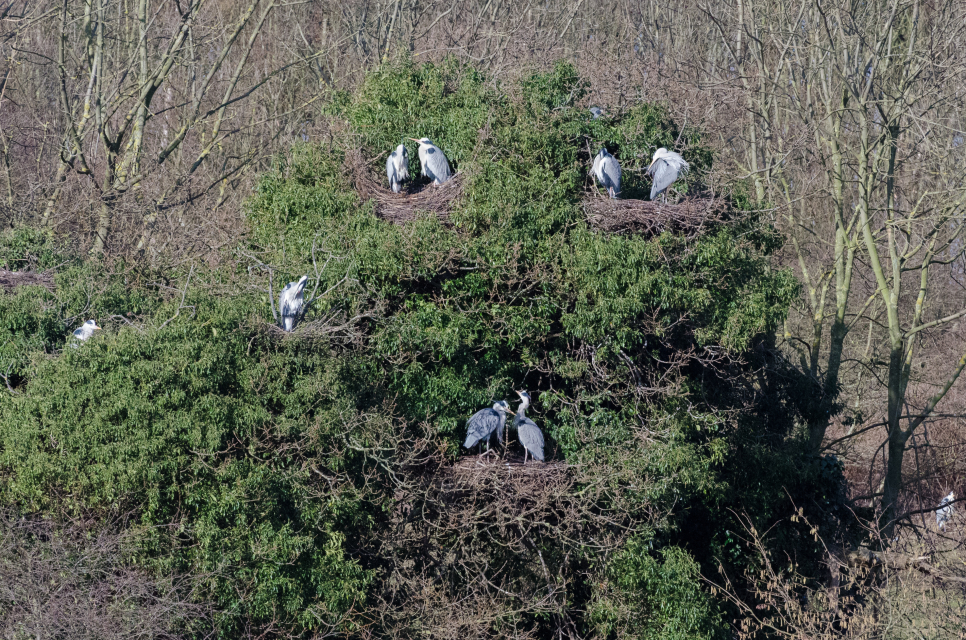
By Kate Ferguson, reserve warden
A prehistoric-sounding squawk echoes across the river as a large shadow flies overhead, stick in beak, and scattering lapwing everywhere. It’s a majestic grey heron, returning from a trip to gather nesting material from the banks of the River Wear.
As the top Tyne and Wear site for grey heron*, the heronry at WWT Washington’s Wader Lake attracts up to 60 grey heron individuals during the breeding season. As you can imagine, a hedge full of vocal, nesting grey heron not only brings an incredible spectacle, but also a lot of heron-style drama!
As the reserve prepares for the return of the herons next month, we take a glimpse into grey heron breeding and look back on how the herons did during 2022.
A typical grey heron breeding season
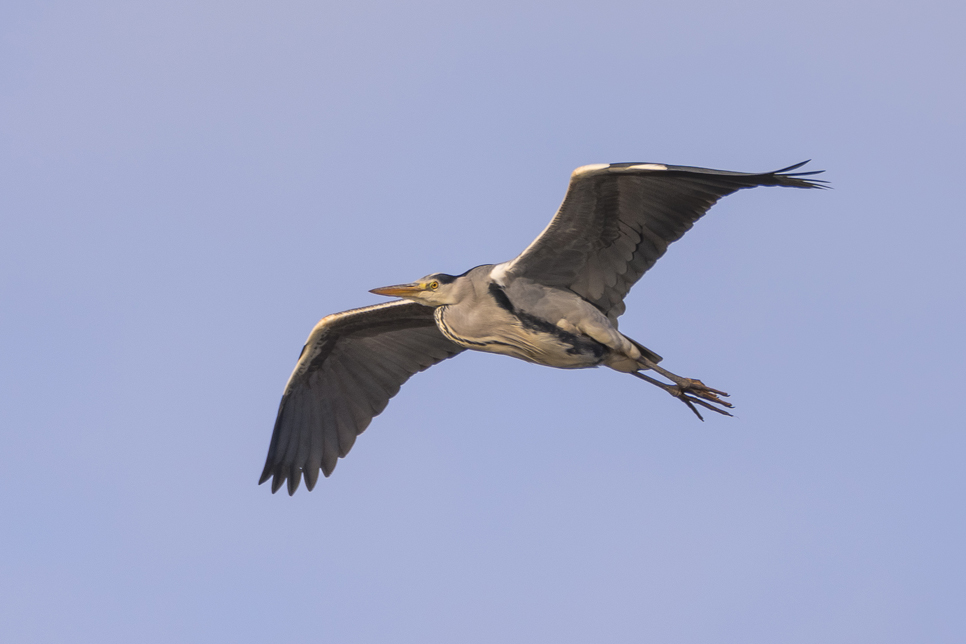
The breeding season for grey herons kicks off in February, with the sight of several birds hunched up, poised along the edge of Wader Lake meadow.
Known to be colonial nesters, grey herons typically nest in groups, building wide platform-like structures atop tall trees, bushes and scrub.
Down at Wader Lake more herons arrive, the standing continues and the queue of herons grows. Once numbers have increased at their ‘standing ground’ and breeding conditions are synchronised across the group, they are ready to take the trees.
As far as nest building goes, grey herons are expert DIY renovators! While they are perfectly capable of building nests from scratch, where possible, grey herons usually opt to spruce up the existing nests left over from the previous year’s breeding season.
Males tend to be the first in the trees, claiming an old or new nest site and advertising it through a series of loud calls to the females in the group. Following some stretching and bill snapping displays with a prospective partner, a breeding pair is formed and the new couple can sometimes be seen doing a ‘fly by’ over their new nesting territory.
With partners assigned, the real nest building can now begin. Males will usually spend more time gathering the materials, often flying over Wader Lake footpath to the area surrounding the River Wear.
Back in the nest, females use the gathered sticks and materials to do most of the construction to enlarge the existing nest. After the necessary renovations are complete, the nest is ready for egg laying, with the average clutch numbering four eggs.
After a month of shared incubating among the pair, a clutch of hungry heron chicks is hatched, with parents initially feeding young using regurgitated and pre-digested prey. As the young herons grow, they progress to accepting whole prey from their parent’s beaks.
Following another busy month of begging for food and nest-antics, the brood is finally fully-feathered, with their spiky grey heads visible as they peer out and begin exploring life outside the nest.
Having taken their first flights and attempted solo fishing attempts, the heron juveniles fledge by 60-70 days old and go on to be completely independent from their parents.
How did the breeding grey herons do in 2022?
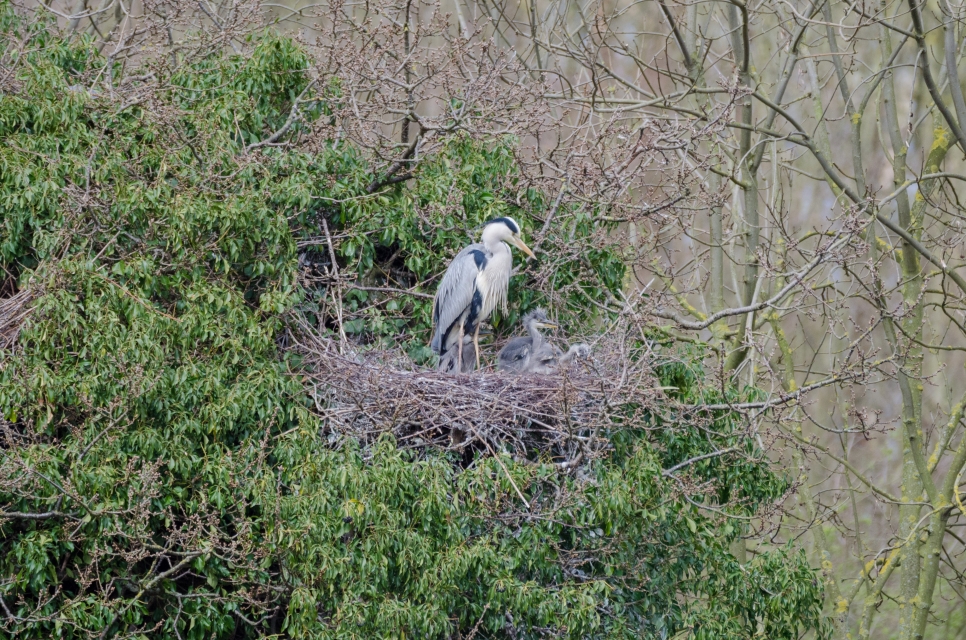
Unpredictable as ever, nature threw WWT Washington’s grey heron colony several challenges to overcome last breeding season.
Whilst numbers rose as expected throughout February and March - with the highest number of herons seen together on Wader Lake during those months being 38 – surprisingly, many of the herons were sceptical to make the first move into the treeline.
Lone individuals were seen exploring the tree tops one moment, then an hour or so later the hedge would be empty again and the herons would be back to their usual ‘stand-off’.
It was soon realised that this was due to increased bird of prey activity around Wader Lake, with the presence of buzzards circling or resting in the heron hedge deterring the herons from making their first move to claim territory.
Yet this wasn’t all the herons had to contend with. With Storm Malik on January 29, followed by Storm Dudley in mid-February, the herons could be seen abandoning their usual position along the exposed water’s edge on Wader Lake and instead sheltering low to the ground, with feet planted and bodies braced against the wind along the far, sheltered edge of Wader Lake meadow.
Apart from taking a bit of a battering and putting a stop to any breeding activity, the storms also took down several key branches in one of the two oak trees the herons have historically nested in, meaning many pre-existing nests were lost and more nests would need to be built from scratch to replace them.
Despite the delays and setbacks, ever resilient, the WWT Washington herons took it all in their stride. The buzzard sightings trailed off and the herons finally plucked up the courage to begin nesting in late March and early April. Better late than never!
While one of the oak trees had been lost, the herons got to work and built several brand new nests in the far left of the heron hedge instead. This resulted in an unusual but interesting age structure across the length of the heronry.
Heron pairs using the remaining intact oak tree and it’s pre-made nests tended to have much older, well-developed and larger chicks, while the herons who had to spend time building completely new nests had much younger chicks or were still incubating eggs at the same point in the season.
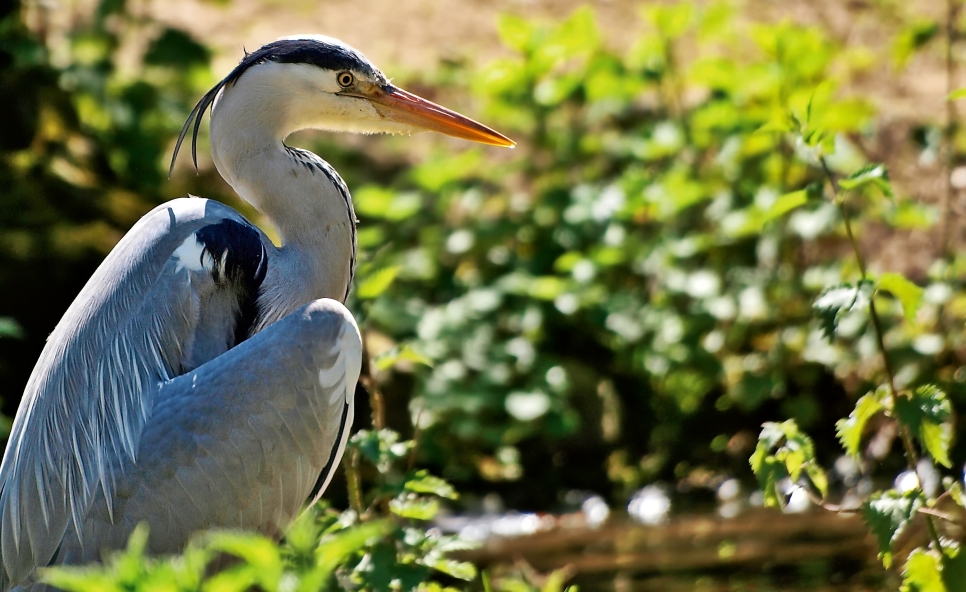
Overall, their perseverance and hard work paid off! We were able to identify 30 nesting pairs of grey heron, who went on to raise a total of 55 fully fledged heron chicks during 2022.
In one exceptional case, one pair even successfully hatched and reared four chicks. And they say three is a crowd! The siblings could often be spotted together in a row on the edge of their nest, as if sitting out on a balcony looking over their lake. Considering the average clutch size laid by a grey heron is four eggs, it was brilliant to see all four of these chicks hatch and fledge safely.
In general, the majority of the other nests successfully fledged two herons each, with the first juvenile leaving its nest on May 5 and many of them seen taking their first group fishing lessons on the banks of Wader Lake throughout May.
Now, with February around the corner, here’s hoping that WWT Washington’s grey herons have another successful - but maybe slightly more drama-free! - breeding season in 2023.
Ready to visit?
If you've been inspired to visit Wader Lake and watch the magnificent grey herons return this season, find out more and plan your visit online.
*WWT Washington Wetland Centre was named the 15th most important place in the UK for populations of grey heron by a Wetland Bird Survey (WeBS) data report from the British Trust for Ornithology (BTO).
